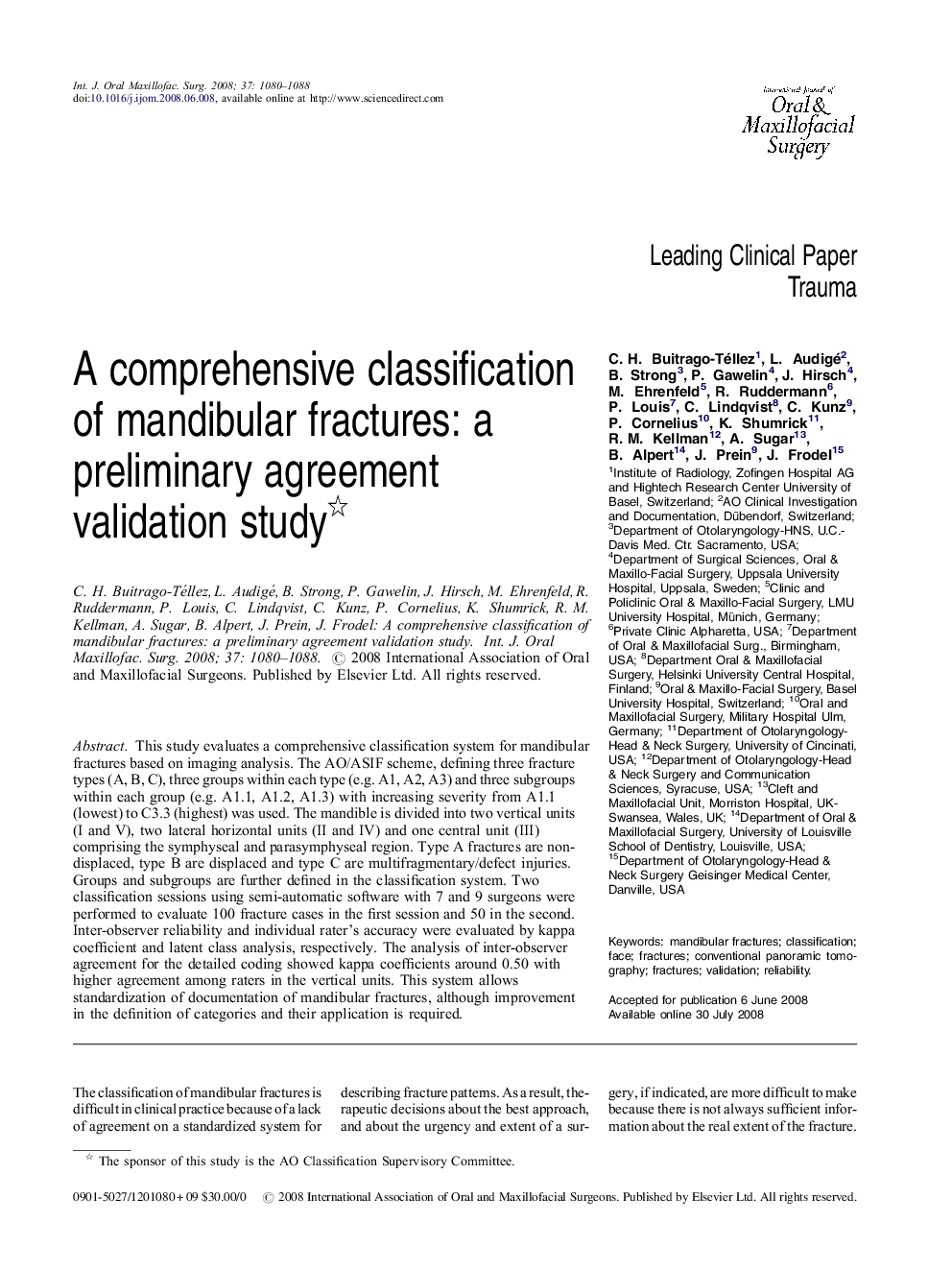| Article ID | Journal | Published Year | Pages | File Type |
|---|---|---|---|---|
| 3134052 | International Journal of Oral and Maxillofacial Surgery | 2008 | 9 Pages |
This study evaluates a comprehensive classification system for mandibular fractures based on imaging analysis. The AO/ASIF scheme, defining three fracture types (A, B, C), three groups within each type (e.g. A1, A2, A3) and three subgroups within each group (e.g. A1.1, A1.2, A1.3) with increasing severity from A1.1 (lowest) to C3.3 (highest) was used. The mandible is divided into two vertical units (I and V), two lateral horizontal units (II and IV) and one central unit (III) comprising the symphyseal and parasymphyseal region. Type A fractures are non-displaced, type B are displaced and type C are multifragmentary/defect injuries. Groups and subgroups are further defined in the classification system. Two classification sessions using semi-automatic software with 7 and 9 surgeons were performed to evaluate 100 fracture cases in the first session and 50 in the second. Inter-observer reliability and individual rater's accuracy were evaluated by kappa coefficient and latent class analysis, respectively. The analysis of inter-observer agreement for the detailed coding showed kappa coefficients around 0.50 with higher agreement among raters in the vertical units. This system allows standardization of documentation of mandibular fractures, although improvement in the definition of categories and their application is required.
